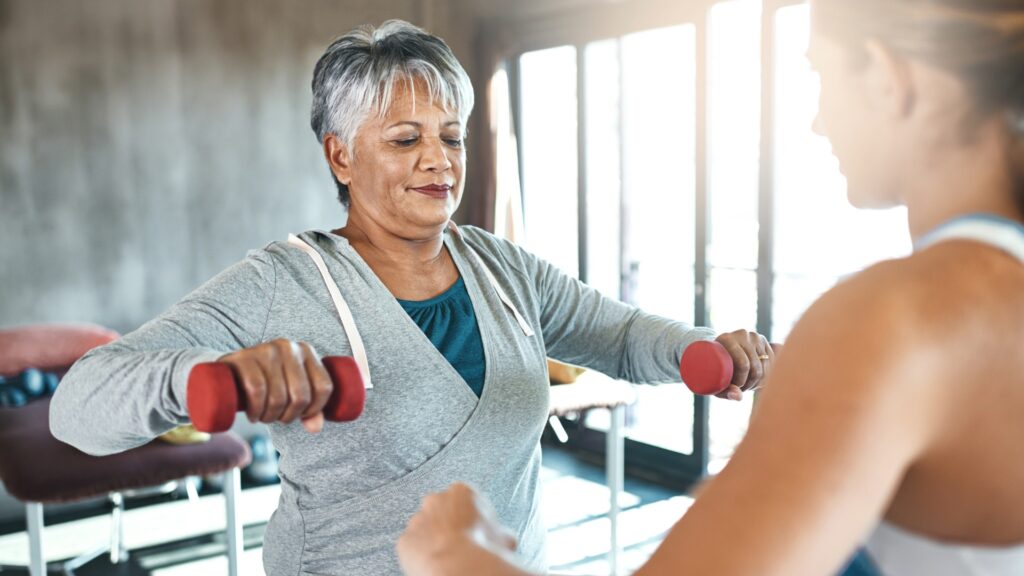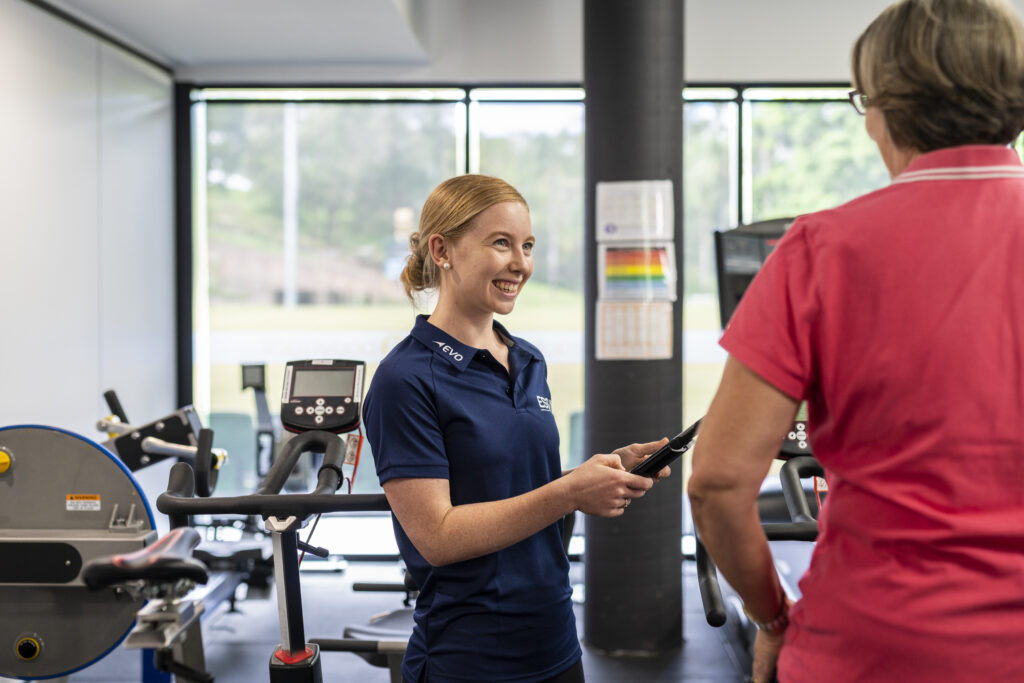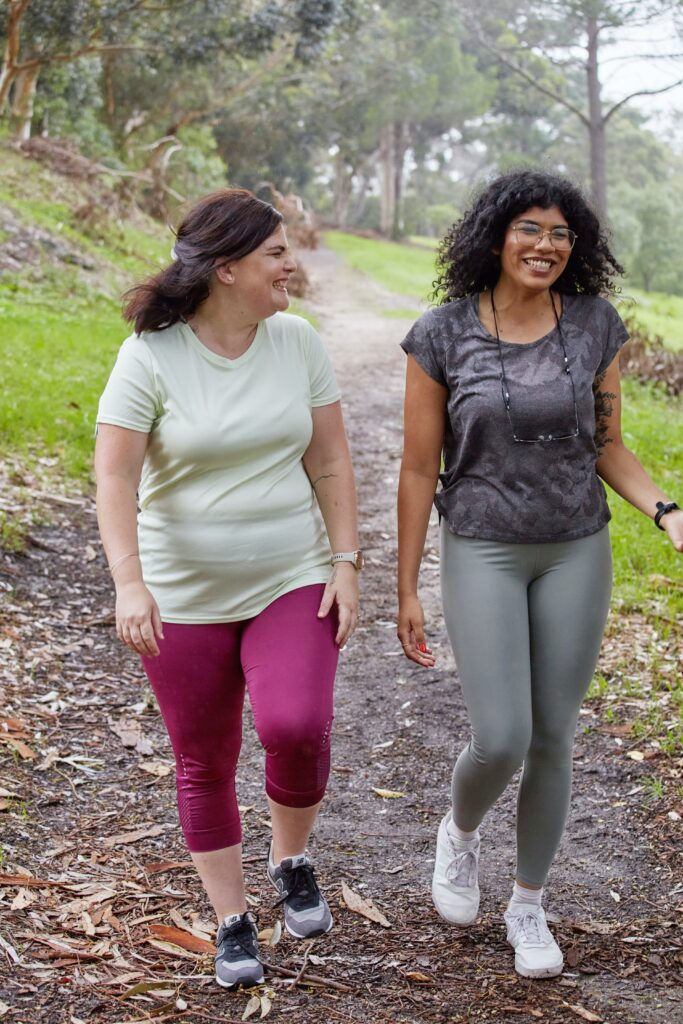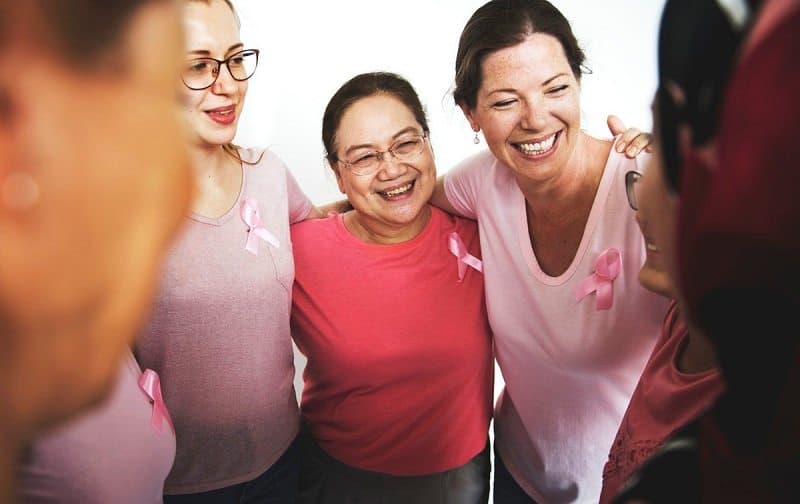Breast cancer
Home / Breast cancer

How does exercise help with breast cancer?
Exercise plays an important role in the treatment of and recovery from breast cancer, through reducing the number and severity of treatment-related side effects and symptoms (such as, pain, fatigue, sleep disturbances, and cognitive impairment), as well as improving or maintaining function during and after treatment. There is also evidence that women who are physically active after a breast cancer diagnosis have reduced risk of recurrence, reduced risk of developing other chronic diseases, and have better overall survival.
Common concerns
- Fear of worsening symptoms (e.g. lymphoedema, fatigue, pain, nausea) – those who exercise regularly are less likely to experience these symptoms and, if they occur, the symptoms are typically less severe. In contrast, inactivity has been associated with the onset and worsening of these side effects. Using a diary to monitor exercise and side effects is an effective way to demonstrate that exercise, at the very least, does not worsen existing side effects.
- Lymphoedema is one of the most feared treatment-related side effects and develops in about 20% of breast cancer survivors who have had axillary dissections. Prevention guidelines suggest avoidance of repetitive use of the arm on the treated side of the body, which creates confusion about the safety of exercise. However, several studies have shown that progressive aerobic- or resistance-based exercise is safe and beneficial. That is, exercise does not cause or worsen lymphoedema, and some evidence suggests that exercise may play a role in its prevention and treatment. Clinical guidelines suggest that some women with lymphoedema wear a compression garment while exercising. However, some women with lymphoedema who have participated in exercise studies have chosen to not wear garments while exercising, and have done so safely. Garment wear during exercise should be discussed with a lymphoedema therapist.
- Trouble exercising during treatment periods with intense side effects is common. Breast cancer survivors may find they cannot perform their usual exercise routine in the days immediately after a cycle of chemotherapy, or when symptoms are particularly intense. Instead of avoiding exercise altogether at these times, preparing a separate exercise program for ‘bad days’ may be useful. For example, instead of a 30-minute walk on the three days after chemotherapy, 10 ‘sit-to-stands’ from a chair and a walk to the letterbox every hour may be more realistic and appropriate. Some exercise on ‘bad days’ helps maintain the habit of exercising while preventing typical function declines that are associated with treatment periods in the absence of exercise.
- Discomfort from wigs while exercising is common, therefore exercising without wearing a wig is best, because wigs can prevent heat loss. However, if you prefer wearing a wig, increasing fluid intake before, during and after exercising, and exercising in well-ventilated areas, may help.
- Skin irritation caused by radiation makes wearing a bra uncomfortable. This creates issues when women find exercising without breast support uncomfortable or embarrassing. A cotton singlet with the bra on the outside of the singlet may reduce friction. Alternatively, a modified exercise program that reduces bouncing (e.g. stationary cycling) may be necessary for the few weeks that when skin irritation is an issue.
- Discouragement from not seeing improvements can be disheartening. Without a structured exercise program, declines in physical function during treatment are likely. While improvements in function during treatment are possible through exercise,
at the very least, exercise during treatment can minimise or prevent typical treatment related declines. - General resistance to exercise is common among survivors of breast cancer, as you still need to overcome all the usual exercise barriers experienced from those without breast cancer (e.g. affordability, time constraints, lack of interest or motivation). Depending on your individual circumstances, these barriers may either be increased or decreased as a result of the breast cancer experience.
If your symptoms get worse during or after exercise, please seek help from your health professional.

What type of exercise is best for breast cancer?
- Aerobic-and resistance-based exercise is safe and beneficial. A whole range of exercise types have been studied including pilates, water-based exercise, ‘boot camp’, aerobic-style classes, walking, cycling, and resistance-based exercise using hand-held or machine weights or therabands. Individuals should be encouraged to participate in their preferred exercise unless clearly contraindicated (e.g. if there is risk of fractures or infection).
- Moderate-intensity exercise is recommended. For those not already regularly exercising, it is recommended that you start at low- to moderate- intensity and progress gradually. For regular exercisers, it is likely safe to exercise at high intensity, but it is important to progress gradually up to this.
How much exercise should I be doing?
Current guidelines recommend maintaining or building up to 150 minutes of exercise each week. Exercise can be done in sessions as short as 10 minutes and should include either or both aerobic- and resistance-based exercises. It is best to spread exercise sessions out across the week (e.g. 30 minutes on 5 days of the week). Depending on the intensity of the resistance-based exercise, it may be necessary to avoid doing resistancebased exercises on consecutive days. Additional benefits may be gained by exercising for up to 300 minutes each week, but it is important to progress towards this amount gradually.
Whilst many can safely exercise during or following treatment for breast cancer without supervision, support from a qualified health professional may help in commencing and maintaining a safe exercise program.


Find a professional
Talk to your GP or other treating specialist about an exercise program that suits your personal preferences and circumstances.
Alternatively, Accredited Exercise Physiologists, who are university-trained health professionals with expertise in the design and delivery of lifestyle interventions for people with chronic and complex conditions including breast cancer, will be able to create an individualised exercise program that suits your needs.
Frequently asked questions
What is an Accredited Exercise Physiologist (AEP)?
An Accredited Exercise Physiologist (AEP) is an allied health professional that prescribes individualised exercise therapy to help people manage their chronic conditions, disabilities, long-term injuries and so much more. They are the most qualified professionals in Australia when it comes to the prescription safe and effective of exercise therapy.
Who should see an AEP?
Anyone who wants to move safely and improve their health can benefit. From chronic conditions to injury recovery, or simply wanting advice on how to exercise right, an exercise physiologist is the expert to see.
Is an AEP covered by Medicare or private health insurance?
Yes. As allied health professionals, exercise physiology services are recognised in government health funding including Medicare, National Disability Insurance Scheme (NDIS) and Department of Veteran’s Affairs (DVA), workers’ compensation and private health insurers. It’s important that you check with your provider as coverage can vary.
Where can I find an AEP?
Use recognised directories like Exercise & Sports Science Australia (ESSA), ask your GP or look for allied health clinics with AEP credentials.
You may also like

Exercise and cancer – what are the benefits?
February 4th is World Cancer Day. In the vast realm of cancer, where uncertainties loom and treatments abound, one powerful tool often gets overlooked – exercise. Let’s redefine our perspective on exercise as a method of treatment and shed light on its safe and impactful role in cancer management! When it comes to exercise and […]

How to exercise safely with breast cancer
Breast cancer is the most common cancer for Australian women. It can also occur in men, although this is rare. Thanks to advances in treatment, survival rates for those with breast cancer have increased significantly over the past two decades. Today, 5-year survival rates exceed 90%. Benefits of exercise The impact of side effects from […]

